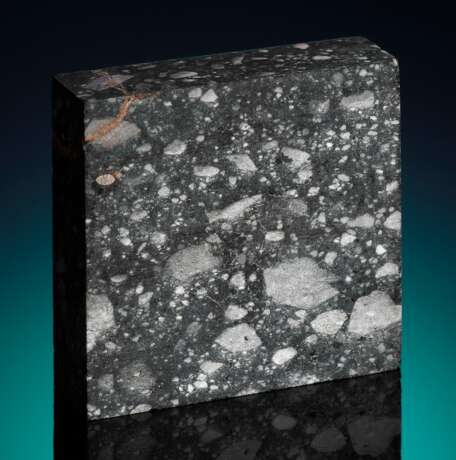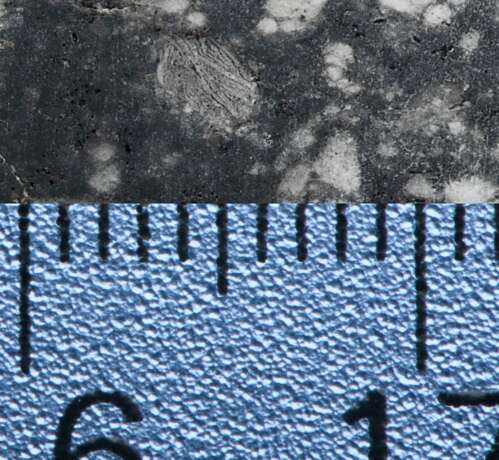ID 491279
Lot 69 | GEOMETRIC SAMPLE OF THE MOON — NWA 12691
Estimate value
$ 10 000 – 14 000
In the last two years a massive lunar strewn field straddling the Mauritanian, West Saharan and Algerian borders was discovered. About 250 kg of lunar meteorites were recovered — nearly doubling the mass of all lunar meteorites known at the time. An extraordinary bounty, this created the opportunity to fashion a limited number of spheres. The specimen now offered is a “cut-off” from lunar meteorite in the process of preparing a larger mass prior to the sphere-making process.
The official classification and publication of this meteorite was performed by Dr. Anthony Irving, the world’s most prolific classifier of lunar and Martian meteorites. The abstract he provided to the Nomenclature Committee of the Meteoritical Society became part of the scientific literature upon vetting and its publication in the Meteoritical Bulletin.
As one would expect, many of the Moon rocks returned by Apollo missions are nearly identical to lunar meteorites — and such is the case here. This lunar sample is composed of different fragments of rocks and minerals, including signature anorthite, cemented together by lunar regolith and other crushed rock. On the front face it features a prominent grain of metal from a meteoroid impactor at the left margin as well as a curious inclusion at the center right (see second image) which is most likely an impact-melt spherule. All surfaces have been cut revealing a galaxy of fragmentary inclusions, the result of the ongoing bombardment of the Moon’s surface by meteoroid impacts prior to the collision responsible for launching this rock to Earth. Modern fashioning.
Christie's would like to thank Dr. Alan E. Rubin at the Department of Earth, Planetary, and Space Sciences, University of California, Los Angeles for his assistance in preparing this catalogue.
The analysis of this meteorite was led by Dr. Anthony Irving, whose findings underwent peer review by the Nomenclature Committee of the Meteoritical Society. The analysis and classification was published in the 108th edition of the Meteoritical Bulletin — the official registry of meteorites.
44 x 44 x 14mm (1.75 x 1.75 x 0.5 in.) and 77 grams
| Address of auction |
CHRISTIE'S 20 Rockefeller Plaza 10020 New York USA | ||||||||||||||
|---|---|---|---|---|---|---|---|---|---|---|---|---|---|---|---|
| Preview |
| ||||||||||||||
| Phone | +1 212 636 2000 | ||||||||||||||
| Fax | +1 212 636 4930 | ||||||||||||||
| Conditions of purchase | Conditions of purchase | ||||||||||||||
| Shipping |
Postal service Courier service pickup by yourself | ||||||||||||||
| Payment methods |
Wire Transfer | ||||||||||||||
| Business hours | Business hours
|




